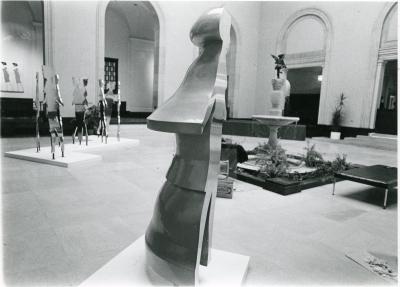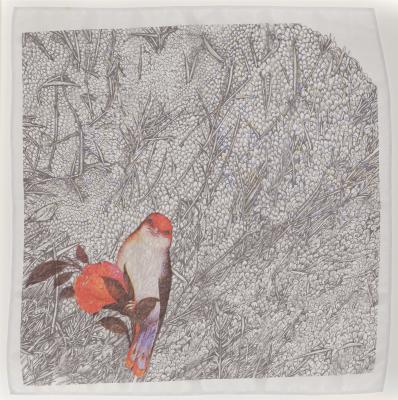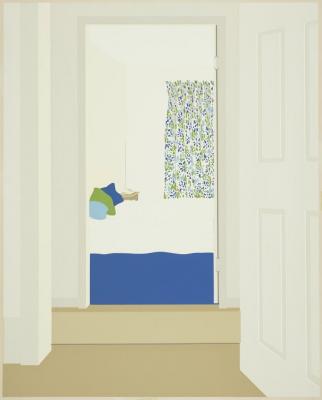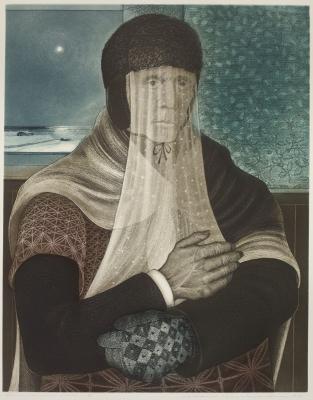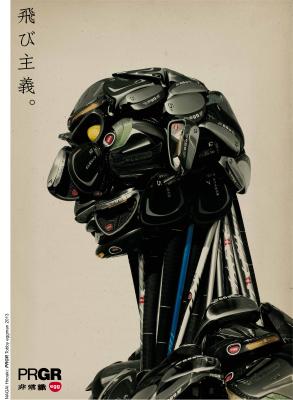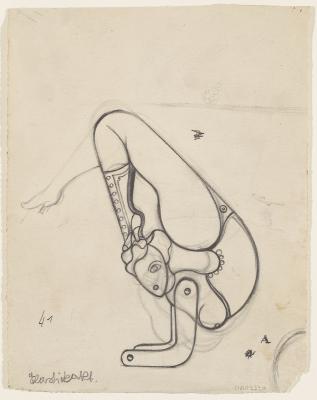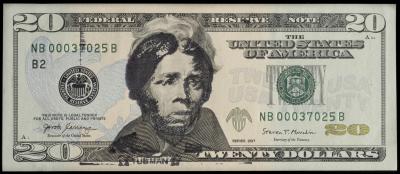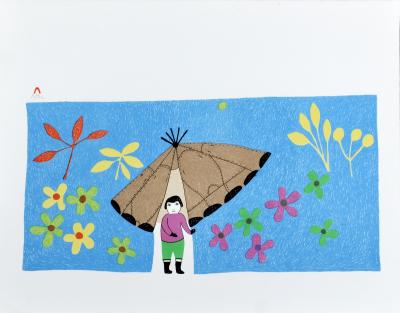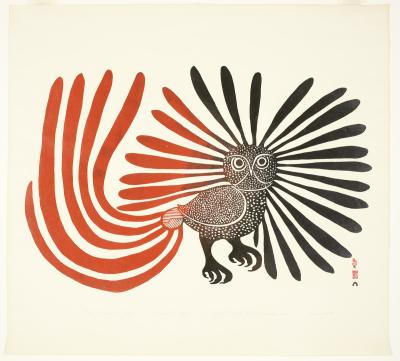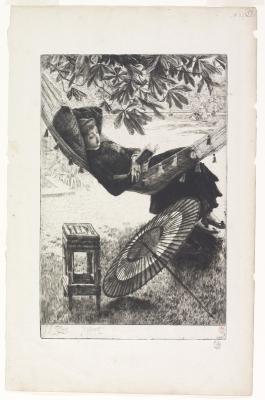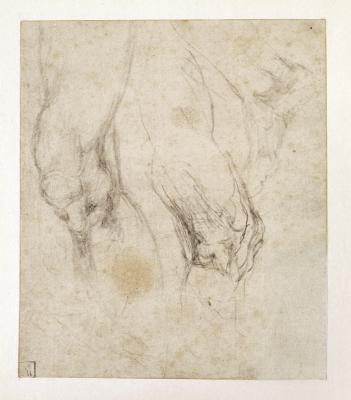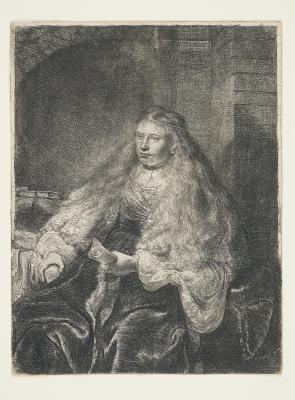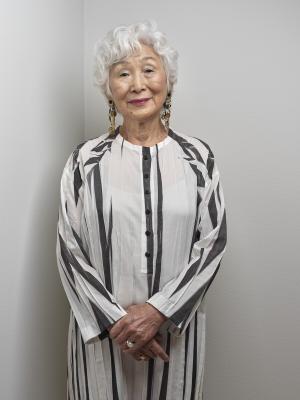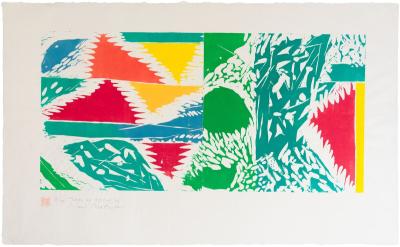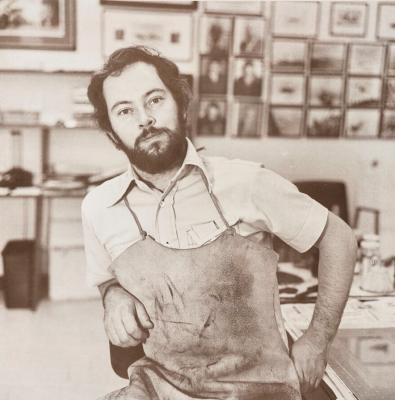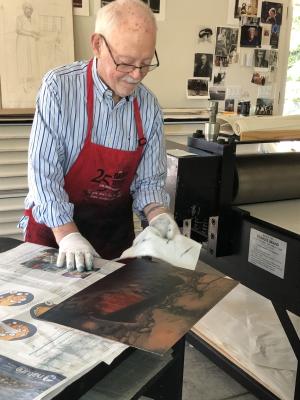
Joys of Spring
Naoko Matsubara’s love for nature, woodcuts and vibrant colours shine in her abstract prints
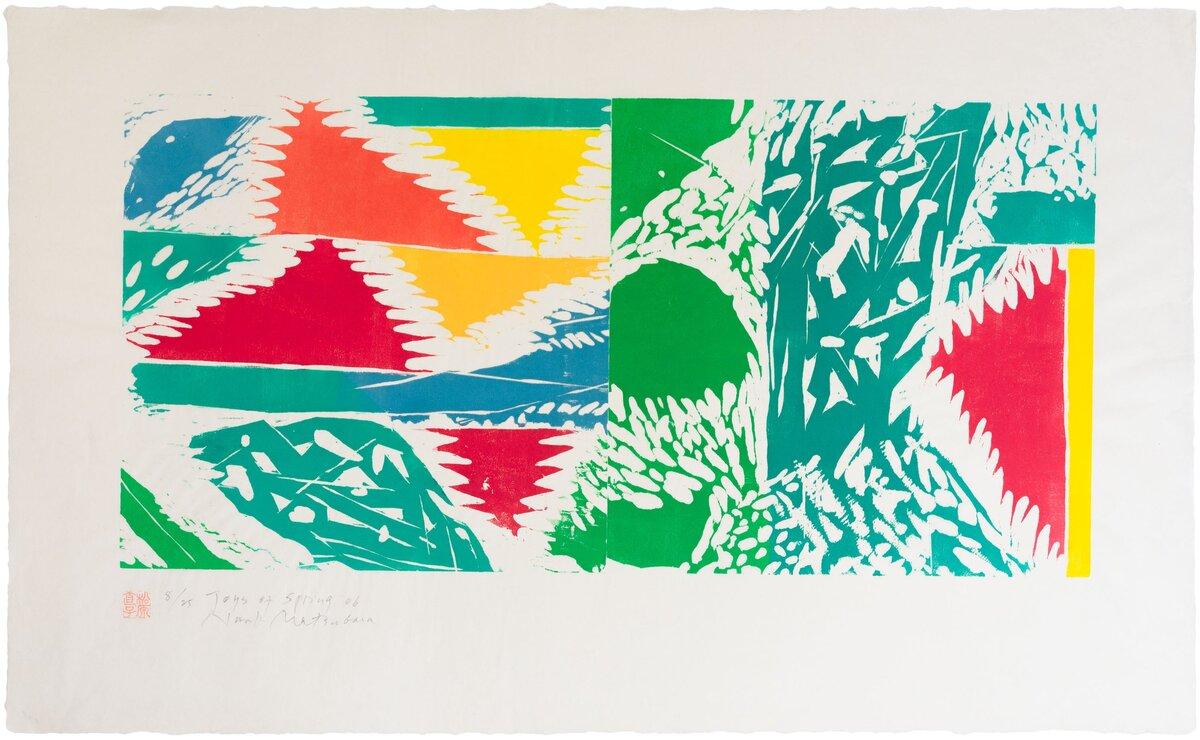
Naoko Matsubara. Joys of Spring, 2006. Colour woodcut print on handmade Japanese paper, Sheet: 63.5 x 98.3 cm. Art Gallery of Ontario. Gift of the artist, 2024. © Naoko Matsubara. Image courtesy of the artist. Photo: Yoshiki Waterhouse
For this month’s RBC Art Pick, we’re spotlighting Joys of Spring (2006), a vibrant woodcut by celebrated printmaker Naoko Matsubara exploring nature through colourful abstraction. It is on view now at the AGO as part of the artist’s career-spanning solo exhibition of 20 exuberant woodcut prints with an accompanying nine-minute documentary film.
Woodblock printmaking has been at the heart of Matsubara’s artistic practice for more than six decades. As one of the oldest forms of printmaking, woodblock printing is a relief print technique where images, designs, or words are carved in reverse onto a wood block. Applying oil-based inks onto a wooden carving, Matsubara then prints her images onto handmade Japanese and Korean paper.
“You want it to go this way, but it goes that way. A mistake can lead you to something beyond intellect. That’s what I like about woodcutting,” said Naoko Matsubara.
Joys of Spring beautifully exemplifies Matsubara’s love for nature, bright colours and experimentation within her signature woodcut technique. Since the start of her artistic journey, she has connected deeply with wood as a medium, and it soon became central to her practice. Although she employed other mediums including painting, lithography, etching and silk screening, it is her fascination with trees and the properties of wood grain that has captivated her. Trees, a recurring theme in her work, are often described as her personal leitmotif.
Her deep connection to nature began in childhood. Growing up in a shrine where her father was a Shinto priest, Matsubara admired the towering trees that surrounded her. In Japan, nature is revered, with trees, rivers, and other elements often holding spiritual significance. This early bond with nature remains a major influence, inspiring much of her work throughout her career.
Unlike many Japanese printmakers who continue to follow a complex production system of pre-modern times, Matsubara takes a more hands-on approach. She carries out the entire process herself – designing, block-cutting, inking and printing. She does not trace a design or work off a preliminary sketch. Instead, her approach is spontaneous, beginning with a rough idea and evolving as she directly carves into the blocks.
She prefers oil-based inks for their bolder pigments, but she incorporates both oil and Japanese water-based inks into her practice. Her cutting tools are diverse, ranging from scissors and nails to V-gouges and even electric hand tools, to carve her intricate designs. For printing, she typically uses her own press, but sometimes collaborates with a fine local press. She also continues to use the traditional method of rubbing the back of the paper with a wooden roller or Japanese baren.
“The intricate and complex process of printmaking demands the artist to understand their end goal, and work with their medium, in this case the woodblock, to shape and define it to support their vision," says Corrie Jackson, Senior Art Curator, RBC. “This commitment to an idea reflects not only Naoko Matsubara’s exceptional creativity and technical execution, but also the important role artists play in offering us, as viewers, insights into their unique view of the world through their work.”
Find Joys of Spring (2006) and Matsubara’s other works on view now in the Nicholas Fodor gallery (gallery 140 and gallery 141) on Level 1 of the AGO, as part of Naoko Matsubara. Curated by the AGO’s Associate Curator of Canadian Art Renée van der Avoird, the exhibition is on view now until February 16, 2026.
